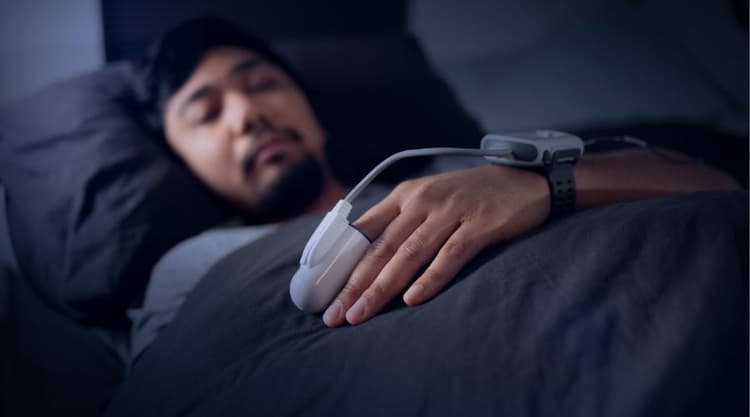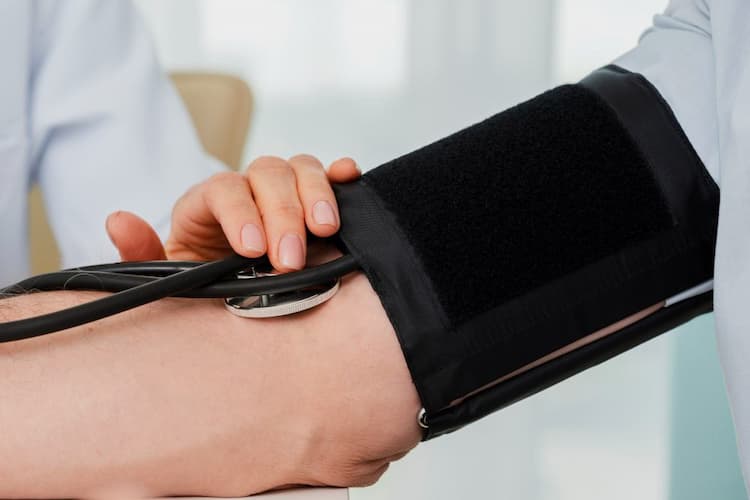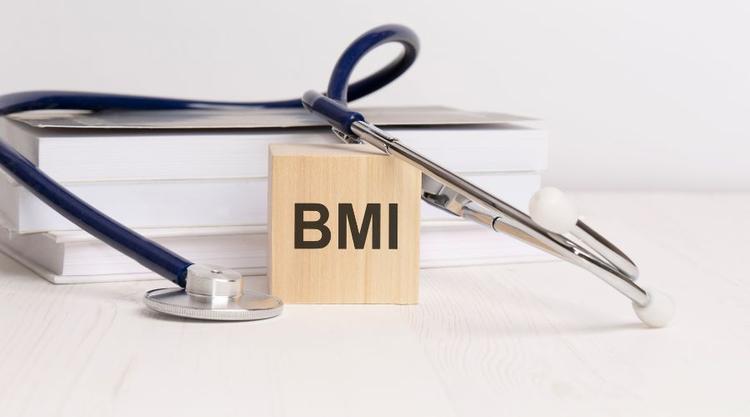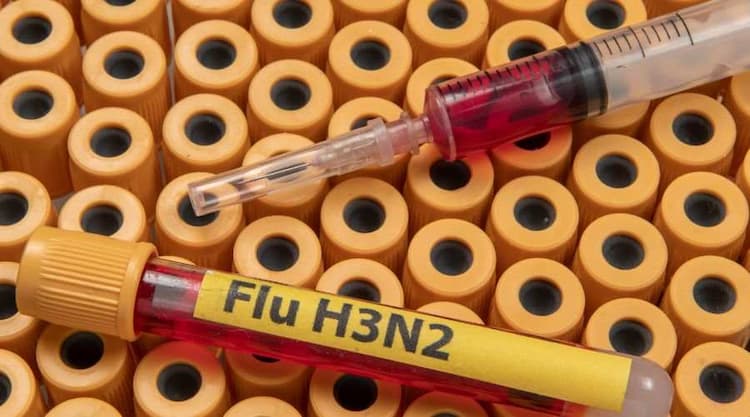Overactive Bladder (OAB): what its causes and treatment

Medically Reviewed By
Dr. Ragiinii Sharma
Written By Srujana Mohanty
on Jul 11, 2022
Last Edit Made By Srujana Mohanty
on Mar 18, 2024
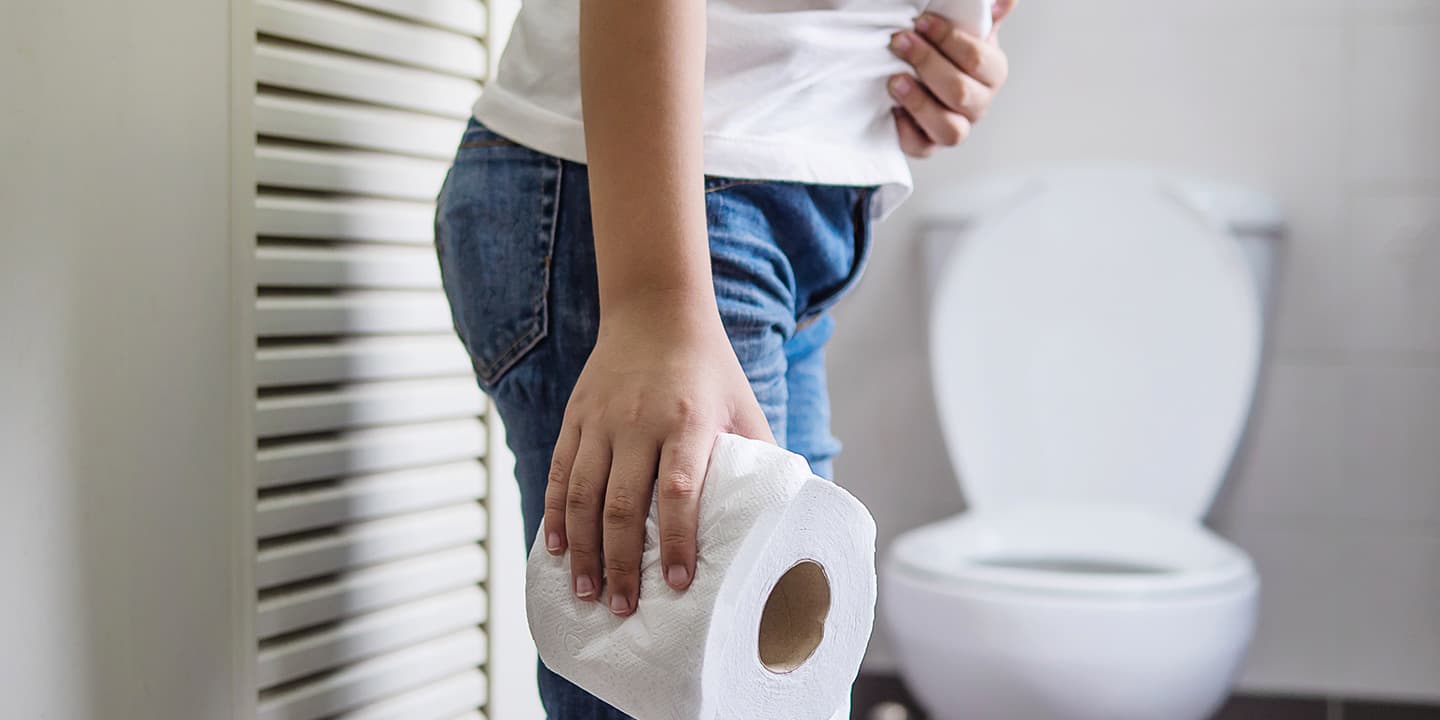
An overactive bladder (OAB) is when you have a sudden urge or need to urinate frequently. The bladder gets full quickly, needing to pass urine more than usual at night and day. Sometimes, you may also experience urgency incontinence- unintentional urine loss.
An overactive bladder can get one in an embarrassing situation, wanting them to isolate themselves from social and work life. A comprehensive evaluation of the bladder system can help understand the exact cause of the overactive bladder.
This article explores the symptoms and causes of the overactive bladder while delving into its treatment and management options.
How does the urinary tract function normally?
The urinary system is a vital system of the body that eliminates liquid waste and salts in the form of urine while purifying the blood. Kidneys are the main organs that function to clean the blood and remove waste from the body.
The human urinary tract has two bean-shaped kidneys located just below the ribcage, on either side of the spine. The kidneys are connected to the bladder with the help of two thin tubes called ureters that carry the urine from the kidneys to the bladder.
The urinary bladder is a balloon-like muscular bag that holds the urine until it gets full and passes out of the urethra. The urethra is a small tube connected to the bladder that helps pass urine out of the body.
The functioning of the urethra is controlled by a sphincter muscle that locks the urine. When the bladder gets full, the sphincter muscle creates an urge to urinate and opens to release the urine when the urinary bladder contracts.
Overactive bladder (OAB): What is it?
Overactive bladder (OAB) is not any disease or disorder. It is a pile of urinary symptoms such as the sudden urge to urinate and frequent urination- more than the usual during the day and night. Sometimes, the need to urinate can be so uncontrollable that the urine gets leaked, causing urinary incontinence. Overactive bladder is a sudden feeling of rushing to the bathroom for urination.
Another urinary that is common but cannot be related to an overactive bladder is stress urinary incontinence or SUI, where the urine leaks while laughing, sneezing, or doing some physical activity. Overactive bladder symptoms may go under-reported due to the social stigma, lack of awareness, or less accessible medical care. A Times of India urological report suggests that one out of six individuals suffer from overactive bladder, especially after the age of 40.
According to a study, almost one in six individuals have overactive bladders. Literally, 30 percent of men and nearly 40% of the female population experience or rather live with an overactive bladder.
Can an overactive bladder affect your life?
A person with an overactive bladder can have embarrassing situations in work and social life. Frequent trips to the loo can keep you away from long journeys and outings with friends and family. People with overactive bladders tend to isolate themselves and prefer to stay at home.
An overactive bladder can interrupt the sleep pattern. You will need to get up more often for a loo break during your sleep. Disturbed sleep can impact your normal day’s routine. More frequent urine leaks can cause skin issues and infections near the groin region.
Demystifying the myths of overactive bladder.
While there are a lot of myths about overactive bladder, seen mostly among women and as a sign of ageing, it is essential to get to the facts and truths about overactive bladder. Here is a table that debunks the myths circulating about overactive bladder.
Overactive bladder: Signs to look out for
If you feel you have an overactive bladder, check with one of the following symptoms of an overactive bladder that will require further diagnosis and treatment.
| MYTH about overactive bladder | TRUTH- Debunking the myths |
| Overactive bladder is a normal part of ageing. | Overactive bladder may be common among the older population. But, it isn’t a typical part of getting older. |
| Overactive bladder is a female problem. | Statistics show nearly 30% of men also have an overactive bladder, and it is not just a female issue. |
| Overactive bladder is an issue of the prostate. | Though prostate enlargement may cause an overactive bladder, it may not be the only reason for an overactive bladder in men. |
| Overactive bladder is because you did something. | Weak sphincter muscles or nerve damage may cause sudden urinating urges or leaks. |
| Overactive bladder is treatable only by surgery. | an overactive bladder is a group of symptoms that can be managed and does not necessarily require surgery. |
Sudden urge to urinate
One of the first signs of an overactive bladder is the sudden and powerful urge to urinate. The need to go to the bathroom to release urine cannot be ignored. The “got to go” feeling creates a fear of urine leakage if you don’t hit the loo.
Urgency or Urge Incontinence
Not caused due to stress, sneezing or any physical activity as in stress urinary incontinence (SUI), urge incontinence in an overactive bladder is a leakage of urine after a sudden urge to urinate.
Frequent urination
The number of times a person urinates is different between individuals. According to urologists, urinating more than 8 times in 24 hours is a sign of frequent urination. The overactive bladder will want you to urinate more than eight times a day.
Wake up from sleep to urinate
The urge to urinate at night may want you to wake up more than once during your sleep. This symptom of an overactive bladder is also called nocturia.
Overactive bladder: what are the causes?
Typically, when the bladder gets full, the brain signals the bladder to contract and release the stored urine. This causes an urge to urinate, and the bladder muscles contract to pass out the urine through the urethra during urination.
During urination, the sphincter muscles in the urethra open up to force out the urine. But, when the bladder is not full, the bladder muscles relax. A healthy bladder signals only when the bladder is full or about to get full.
An overactive bladder can signal the urgency to urinate even when the bladder isn’t full. An overactive bladder is when the nerve signals between the brain and bladder do not function properly. The sudden urge to urinate can arise even when the bladder is not full.
A bladder spasm or detrusor contraction occurs when a sudden contraction or squeezing of the bladder muscles occurs. The reaction, also known as the spastic bladder, pushes the urine out, causing leakage or urge incontinence.
Overactive bladder is also caused when the bladder muscles are way too active. In other words, the bladder muscles contract even when the bladder is not full. Thus causing an urgency to urinate more frequently.
Medical causes
There is no specific cause of overactive bladder. However, certain conditions as mentioned-below, may contribute to the overactive bladder symptoms.
- Stroke, multiple sclerosis, or other neurological disorders.
- Diabetes
- Urinary tract infections or UTIs that have symptoms similar to overactive bladder
- Hormonal changes, especially in women during menopause
- Pelvic muscle weakness or spasms
- Tumours, bladder stones, and other bladder affecting conditions
- Enlargement of the prostate in men that impede bladder functions
- Constipation
- Previous surgery to treat urinary incontinence
- Overweight or obesity that can exert extra pressure on the bladder muscles causing urge incontinence.
- Postmenopause, women tend to develop oestrogen deficiency that can contribute to sudden urge to urinate.
Other causes
External factors also contribute to overactive bladder symptoms such as,
- Medications that cause a lot of waste removal through urine or require more fluid intake cause more frequent urination.
- Too much caffeine or alcohol consumption
- Ageing causes deterioration in cognitive function, making it difficult for the bladder to understand brain signals.
- Medications that cause your body to make a lot of urine or require that you take them with lots of fluids
- Difficulty in walking can be a concern causing bladder urgency as you may not be able to reach the bathroom on time.
- Improper or incomplete emptying of the bladder may cause an overactive bladder requiring more frequent bathroom visits.
Overactive bladder: Associated risks and complications
Age is one factor that can increase the risk of developing an overactive bladder. Ageing can decline cognitive functions where the bladder cannot understand the signals sent by the brain. Diabetes, stroke, enlarged prostate, and neurodegenerative diseases such as Alzheimer's can contribute to an overactive bladder.
Some people with an overactive bladder often face bowel issues. overactive bladder leads to urge incontinence that can affect the quality of life, causing
- Depression,
- Emotional distress,
- Anxiety,
- Interrupted sleep cycles,
- Sexual issues
Women with an overactive bladder may also have mixed incontinence- a combination of urge and stress urinary incontinence. Bladder storing issues and problems emptying the bladder can also be part of overactive bladder complications.
Overactive bladder: How can it be diagnosed?
If you suddenly develop a usual urge to urinate, you will need to visit your physician, who will take you through the diagnosis and treatment process.
A review of medical history
The first step to understanding any condition is to understand the medical history. Your physician will go through your symptoms through questions. Your doctor will also review associated health conditions such as hypertension, and diabetes, if any. You will need to inform your doctor about your past medical records, medications, and supplements you regularly take, to help them better understand your current health condition. Inform your doctor about your diet, liquids, and water consumption.
Physical Examination
A physical examination includes a rectal or pelvic exam where the physician will check the organs of the abdomen.
Urine Analysis
Testing of urine samples to rule out the possibility of a urinary tract infection and to check the presence of blood traces, bacteria, WBCs, or any other abnormality.
Neurological exam
A focussed neurological test helps detect problems of the sensory nerves or helps identify reflex issues.
Bladder function tests
Bladder function tests include ultrasound scans and urodynamic tests that evaluate the following aspects.
- Measures the urine flow rate and speed of voiding with the help of a device called, uroflowmetry. A uroflowmetry is a device into which you will need to urinate. The uroflowmetry measures the urine and the speed while translating the captured data into a graphical representation depicting the speed at which the urine flows.
- Cystometry- Tests the bladder pressure and in the surrounding areas as the bladder gets filled. During cystometry, a catheter (a thin tube) is used to fill the bladder slowly with warm fluid. Another catheter with a pressure-measuring sensor device is placed in the rectum in men and the vagina in women. The sensor evaluates the pressure exerted and the required pressure to empty the bladder. This procedure also helps detect involuntary muscle contractions or bladder muscle stiffness.
- Measures the amount of urine left in the bladder after urinating- post-void residual urine using ultrasound scanning. If there is a problem emptying the bladder completely, the leftover urine in the bladder can cause symptoms similar to that of an overactive bladder. After voiding, the doctor will conduct an ultrasound scan that shows the amount of urine left in the bladder. Sometimes, a catheter may be inserted to drain the remaining urine, and the collected urine is measured for analysis.
Overactive bladder: How can it be treated?
The first line of treatment for overactive bladder will be amending lifestyle and behavioural interventions that can help manage the irritating bladder symptoms.
Behavioural Therapy
Lifestyle changes are a part of behavioural therapy where your healthcare provider may change the foods you eat, your drinking habits, and your trips to the bathroom. Most of the time, these small changes can work and make a difference.
- Avoid foods that affect your bladder function: Certain foods can cause an irritated bladder. Avoiding such foods while limiting the consumption of diuretics such as caffeine, tea, and alcohol can help alleviate overactive bladder symptoms. High fibre foods, whole grains, fresh vegetables, and fruits can help improve digestion. Here is a list of some foods and drinks that you will need to avoid for an irritating bladder
- Coffee
- Tea
- Citrus fruits
- Carbonated drinks
- Tomatoes, sauces, ketchup
- Dark chocolate
- Spicy and deep-fried foods
- Alcohol
- Maintain a record of your bladder activity: Pen down the number of times you visit the bathroom for a few days while you make changes in diet. This helps keep a record of how the foods you eat or the liquids you take, affect your bladder.
- Schedule urination trips: You will be required to follow a schedule with visiting the bathroom according to the schedule and not when you have an urge. This can help control bladder function and prevent the sudden urge for urination.
- Delay voiding and double voiding: A bladder training involves practicing a delay in voiding. You begin with a few minutes of delay that can gradually help you urinate every two to three hours. Double voiding is another practice that your physician may recommend where you empty your bladder twice by waiting for a few seconds after the first urination.
- Exercises for overactive bladder: Certain exercises help relax the bladder muscles preventing bladder spasms. Some exercises like kegel or pelvic floor exercises and quick flicks tighten the pelvic floor muscles and strengthen the pelvic floor. When you feel a sudden urge to go, quick flicks can be an effective treatment for weak bladder as it helps control the urge feeling and incontinence. Exercises also help lose weight and ease overactive bladder symptoms.
- Biofeedback: In biofeedback, you will be connected with electric sensors that help measure the changes in the body, like strengthening of pelvic floor muscles. The Computer graphics and sounds help monitor pelvic muscle movements.
Overactive bladder: Medical and surgical treatment options
Medications and surgical options are considered the last resort for overactive bladder treatment when the lifestyle changes are not enough.
Medications
With medicines available, from gels to oral medications and transdermal patches, these medicines help relax the muscles of the bladder. Medicines such as antimuscarinics and beta-3 agonists help stop bladder contractions when the bladder is not full.
Sometimes, a combination of drugs may be required to control overactive bladder symptoms. However, these medications can cause certain side effects like
- Dry mouth- wanting you to have more water or liquid can aggravate bladder symptoms.
- Dry eyes and Blurred vision
- Constipation- that can increase overactive bladder
Your physician may also suggest medications along with lifestyle changes that can help you get relief from an overactive bladder. For the side effects of medications, small sips of water, having a sugar-free candy, or chewing gum can prevent dry mouth. Eye drops can help keep the eyes moist and a fibre-rich diet can ease bowel movements.
During Postmenopause, women can consider taking vaginal oestrogen therapy to strengthen the muscles of the vagina and urethra. Vaginal oestrogen is available in the form of tablets and external applicators. Drugs that can help give relief from an overactive bladder include:
- Tolterodine (Detrusitol)
- Oxybutynin- taken as a tablet (Ditropan XL) or used as a gel (Gelnique) or as a transdermal oxybutynin patch
- Trospium- an antispasmodic agent
- Solifenacin (VESIcare)
- Fesoterodine Fumarate (Toviaz)
- Mirabegron (Myrbetriq) or VESI BETA tablets- beta-3 adrenergic medication
Bladder injections
Also known as bladder botox therapy, the urologist injects OnabotulinumtoxinA- a botox protein from the bacteria Clostridium botulinum that releases botulinum toxin in small quantities. Botox works by relaxing the bladder muscles and reducing urge incontinence. It also prevents the contraction or squeezing of bladder muscles.
After injecting the botulinum toxin, the urologist uses a cystoscope to observe the inside of the bladder. The entire procedure is done after anaesthesia administration. The effect of the botox injection can last up to six months, and consequently, botox treatments can be repeated if necessary.
Nerve Stimulation
Stimulation of nerves connecting the brain and bladder, also known as nerve modulation therapy, uses electrical pulses. These pulses help strengthen communication between the brain and the bladder, allowing smooth bladder functions and improving overactive bladder symptoms. Nerve Modulation therapy can be done in two different ways.
- Percutaneous tibial nerve stimulation (PTNS): PTNS corrects the nerves in the bladder. PTNS involves a small electrode that helps repair signals that are not working properly. The electrode is placed in the lower leg near the ankle, and a minimum of 12 such treatments may help modulation of bladder nerves.
- Sacral neuromodulation (SNS): SNS targets the sacral nerves that carry signals from the spinal cord to the bladder. These nerves control the release of urine from the bladder. SNS uses a pacemaker to control the central nerve signals.
At first, a handheld pacemaker sends pulses to the sacral nerves through a wire. Later, the physician checks how effective the handheld pacemaker is before implanting a permanent pacemaker that can modulate the sacral nerves.
Bladder Reconstruction Surgery
Surgery is usually the last option to treat an overactive bladder, especially in critical or unavoidable conditions. The goal of the reconstruction surgery is to increase the bladder capacity and reduce bladder pressure. Augmentation cystoplasty is the procedure where tissues of the bowel are used to enlarge the bladder.
Urine Diversion Surgery
The urine diversion surgery involves re-routing the flow of urine outside the body. Generally, the diversion is made by bypassing the bladder. The surgery involves risk and is considered only when other options do not work.
Bladder removal
Used as a last resort, bladder removal requires surgical removal of the bladder and replacement with a new bladder or an opening where a bag is placed to collect urine.
Overactive bladder: Ways to prevent it
Healthy lifestyle choices can reduce the likelihood of overactive bladder. Some of them include.
- Maintain a healthy weight.
- Get into an active routine of physical activity or exercise.
- Avoid a sedentary lifestyle or sitting for a long duration in one place.
- Limit the intake of caffeine and alcohol.
- Avoid smoking.
- Ensure proper management of associated health conditions like diabetes that may lead to overactive bladder.
- Regular pelvic floor exercises or kegel exercises can help strengthen pelvic muscles and prevent overactive bladder symptoms.
Frequently asked questions
-
Can an overactive bladder be cured?
Overactive bladder is a chronic yet highly treatable condition. Treatment of overactive bladder includes lifestyle modifications, medications, kegel exercises, and neuromodulation therapies that can alleviate symptoms and better the irritating bladder symptoms.
-
What does a urologist do for an overactive bladder?
When you visit a urologist with symptoms showing an overactive bladder, the urologists will firstly check your medical history, followed by a pelvic exam and a diagnostic test to evaluate the cause. Depending on the cause, lifestyle changes, medications, or other modes of overactive bladder treatment options are suggested.
-
Can sitting too much cause bladder problems?
According to studies, spending long hours sitting at the desk and less physical activity or exercise can give rise to bladder problems like urge incontinence and overactive bladder. In a recent study, men who spend 10 hours sitting were 15 per cent more likely to develop issues with the bladder than men who spent five hours sedentary.
Conclusion
An overactive bladder can develop uncomfortable situations for many. Overactive bladder is a combination of symptoms that include a sudden need to urinate, frequent urination, and waking up between sleep to urinate.
The bladder muscles in the overactive bladder seem to malfunction, causing the combined symptomatic effect. Sometimes, the nerve signalling the bladder may also be an issue where the bladder is unable to understand the nerve signals of contraction or relaxation, causing urge incontinence.
A comprehensive diagnosis of overactive bladder includes a review of medical history, symptoms, and physical exam followed by certain investigative evaluations. The exact cause of an overactive bladder can help devise a conclusive treatment plan that includes dietary changes, high fibre foods, kegel exercise regime, and biofeedback. When these behavioural therapies are not enough, treatment of an overactive bladder will require medications or neuromodulation therapy.
Although surgery is one of the treatment options for spastic bladder, it is considered the last resort. Connect with your physician or a urologist to understand your bladder condition and know more about overactive bladder.
